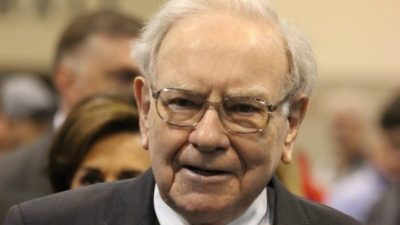It's smart to work backwards when figuring out how to generate retirement income through ASX shares.
A good first step is determining the amount of passive income you need from your dividends.
For the purposes of this article, we're assuming you've determined that you need or want $100,000.
So, let's work out how big your ASX shares portfolio needs to be to achieve that.
We'll also workshop ideas to help you determine your investing strategy and which shares to buy.
The dividend yield you'll need for $100,000 of retirement income
Most ASX 200 dividend shares offer a yield of 4% to 5%. But some of the big ASX blue-chip shares can pay notably more, especially the bank shares, mining shares, and energy shares.
As we recently reported, Woodside Energy Group Ltd (ASX: WDS) shares, Fortescue Metals Group Ltd (ASX: FMG) shares, and BHP Group Ltd (ASX: BHP) shares are currently trading on yields of 9% to 12%.
ANZ Group Holdings Ltd (ASX: ANZ) shares, Westpac Banking Corp (ASX: WBC) shares, and National Australia Bank Ltd (ASX: NAB) shares are trading on yields of more than 6%.
So, let's say you think you can achieve a 7% average portfolio yield. The maths says you will need a portfolio worth $1.43 million.
That's a big number.
But starting early with your retirement income planning means many Australians on ordinary incomes can achieve this.
Let me show you how using the compounding calculator on the federal government's Money Smart website.
Let's assume you earn enough to put $5,000 into ASX shares every year from the age of 20 to 67, and the shares achieve the stated average 10-year return rate of 6.5% (dividends and growth combined).
According to the calculator, your retirement income fund will be worth $1.5 million at age 67.
Now, in terms of getting your retirement income fund to deliver a 7% dividend yield every year…
Ideas for increasing your portfolio's dividend yield
As we said earlier, ASX 200 shares typically deliver a 4% to 5% yield. But you've got an ambitious retirement income goal of $100,000.
So, what can you do to increase the yield?
Well, that 7% average yield is what you need your retirement income fund to deliver at the time of your retirement.
So, say you get started at age 20 with a small number of ASX 200 shares delivering the usual 4% to 5% dividend yield.
That income is automatically reinvested in more shares because you sign up for each company's dividend reinvestment plan (DRP).
Then, on top of the $5,000 you put into your portfolio each year, you may want to take advantage of inevitable market corrections and crashes over time to buy more shares when prices are super low.
This assumes you have the capacity to put away extra savings over the long term beyond that $5,000 per year investment commitment.
Buying more shares when prices are low will help you lower the average price of all the shares you own in your portfolio. This, in turn, can raise the average dividend yield. This is a form of dollar-cost averaging.
Which ASX shares should you buy?
This depends on your personal risk tolerance and many other factors, but here are some ideas for stock selection critieria based on everything we've discussed above.
Firstly, not every company runs a DRP. So, if you like the idea of auto-pilot dividend reinvestment over the next couple of decades, it may be best to only invest in ASX shares with DRPs.
In terms of what type of shares to buy…
If you're a conservative investor, then perhaps ASX 200 blue-chip large-caps are the best way to go. Or, you may want to consider a mix of ASX growth shares and ASX dividend shares.
The problem with growth shares is they typically don't pay dividends.
So, you could use them to achieve bigger capital gains in the early years of building your portfolio, but at some point you'll have to sell them — and pay tax on those gains — before redeploying the capital into the dividend-paying shares that will deliver that $100,000 retirement income you want.
Hmmm. Many things to consider, and many ways to get there.
What appeals to you?
Other factors for your retirement income
As we said, at age 67 you'll likely need the bulk of your portfolio to be dividend-paying shares.
It's also likely a good idea to be invested mostly in ASX dividend shares that carry full franking credits. This will reduce the amount of tax you have to pay on your retirement income tremendously.
This is important because if you want $100,000 of retirement income in your hands (i.e., after tax), you'll actually need to earn about $130,000 in dividends.
You can do your own calculations using the latest tax bracket information on the ATO website.
Lastly, the retirement income you need is likely to increase over time due to inflation. So, another helpful criterion may be choosing ASX shares with a solid history of raising their dividends.
One example is the diversified investment house Washington H. Soul Pattinson and Co Ltd (ASX: SOL). As my Fool colleague Seb recently wrote, Soul Patts has raised its dividend every year since 2000.
Of course, this doesn't guarantee they will do so in the future.
However, the boards of most ASX dividend shares nurture such reputational traits in order to attract a steady stream of new investors year after year.
Foolish takeaway
There's more helpful information in our retirement planning guide and dividend investment guide.
You may also want to seek formal financial advice to help you build your retirement income fund.








